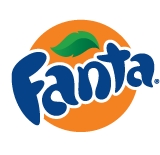Launching Fanta In North America

Core Skills:
- Translating Consumer Insights into Successful Consumer Strategies
- Building Engagement through Emotion, Brand and Technology
Problem
In 2002, I was asked to bring Fanta, The Coca-Cola Company’s $4 billion of 2nd largest global brand to North America after a 15-year hiatus. It was my job to introduce the brand to a new era of teen consumers. I was the senior brand manager on Fanta and since I did not have any associates reporting to me, I relied heavily on my cross-functional experts.
The primary challenges I faced were (1) launching a new brand in a cluttered category, (2) supporting a national product launch on a regional budget, (3) breaking through to a saturated teen consumer and (4) clearly differentiating Fanta from the other teen brands within The Coca-Cola Company North American portfolio.
Actions
The in-depth consumer positioning research and analysis I did up-front was the key to the brand’s success. This work led to the Fanta North American brand architecture and a complete consumer communication strategy that leveraged the brand’s core equities while maximizing the mystic surrounding it global brand status. These strategic documents became touchstones as I produced the brand’s integrated marketing plan and its supporting operational marketing plan. They were also reference points for the cross-functional team members to insure everything they did was on strategy and moving us toward the long-term vision for Fanta.
Results
The clarity of the brand’s positioning and consumer communication strategy led to a successful creative campaign that resonated with our core consumer. The campaign was called the Fantanas. It was a multi-cultural integrated campaign that not only drove awareness and profitable volume, but also won the 2002 David Ogilvy award for the Americas and achieved the highest advertising index scored with The Coca-Cola Company portfolio.
My leadership on Fanta helped make it the #1 incremental volume driver for North America in 2002 with sales in excess of $250 million. Fanta was also responsible for over 50% of the incremental total global growth in 2002. The team continues to use the Fantanas campaign and the integrated marketing platform I laid out. Globally countries have even adopted the Fantanas as their brand “communicators.”
Fanta Flavor Portfolio / Launch Of Fanta Berry
 Problem
Problem
Fanta was launched as the carbonated soft drink that brightens the fun times that close friends share. Positioned to impart fun through four launch flavors: Orange, Strawberry, Grape and Pineapple, the brand was also part of a comprehensive corporate strategy to replace the Company’s current fruit flavored CSD business (Minute Maid Soda). This required a delicate balance of transitioning consumption while respecting the regional taste equity of cultural consumers. Historically Minute Maid Soda was a sweet, fruity soft drink blended to appeal to the African-American and Hispanic consumers. Going forward Fanta would be the brand that connected with all ethnic segments (African Americans, Hispanic, Asian, Anglo) through its aspirational message and flavor extensions. Fanta was to be a brand with Latin spirit that spoke to the ethnically blind youth of today.
Actions
At the time, the flavored CSD (carbonated soft drink) business was the fastest growing segment of the category (10x faster than the total U.S. soft drink market from 1999-2000). And, competitors like Pepsi and Dr. Pepper were investing in their own flavored brands. It was a race to the leadership position and protecting brand share was critical.
In order to secure future category leadership I produced a separate “Fanta Flavor Focus” that allowed regional bottlers to extend the Fanta taste palette to other tropical fruit flavors as long as they maintained the three core flavors (Orange, Grape and Strawberry). This allowed regions like the South to launch Fanta Peach and the West to look at Fanta Lemon.
In 2002 Pepsi aggressively went after the flavored soft drink market and launched a new brand called Pepsi Blue. The plan was to focus on immediate consumption packaging and thwart the competitive threat of Fanta. Given the rollout of Fanta was still in its first year I decided to retaliate with Fanta Blue. The objective was to build a targeted channel, package and marketing mix operating plan that protected Fanta and continued to demonstrate to our customers that The Coca-Cola Company was investing in Fanta for the long-run.
I lead a cross-functional team that developed the product, package and production run in record time. We were on shelf, on air and in consumers’ hands within weeks. The cross-functional team included members from the bottler, packaging, new product development, research and development, production, forecasting, finance, my advertising agency, promotions, operational marketing, public relations, legal, business affairs and regional marketing.
Results
Fanta Berry was launched in 2002 with its own Fantana, creative and subsidized in-store merchandising displays. The flavor was only in the market for over a year but it successfully protected the Fanta franchise and drove Pepsi Blue out of the market. Today Fanta in the leader is the flavored carbonated soft drink category.
Back to Marketing Portfolio Page
Connect with Me